The best kept secret in Verona
It may be known as the setting for Romeo and Juliet, but this Italian town has a hidden treasure trove of art.
“I have a treat for you, something very special,” says our guide, Mariana, who is taking us on a walking tour of her home city, Verona.
We find it hard to believe we could be afforded any more treats, for Mariana has already shown us a dazzling collection of the city’s secrets, from half-buried Roman ruins to a fossilised marine creature coiled inside one of the city’s ancient limestone pavers.
She has also pointed out bustling piazzas, tiny coffee houses, boutiques offering Italian-only garments and restaurants of distinction. And, of course, the big-ticket attractions: the 2000-year-old Verona Arena, a stadium older than the Colosseum, and the balcony that inspired Shakespeare’s Romeo and Juliet (or Giulietta and Romeo in Italian).
“Now,” says Mariana, “For your treat.”

We have been walking through Piazza Delle Erbe, Verona’s most notable public square, lined with restaurants, cafes and the city’s famous medieval buildings. Reaching the end, Mariana stops in front of a glistening three-storey Baroque mansion that crowns the top of the square. “This,” she announces, “is Palazzo Maffei. And inside, is Palazzo Maffei Gallery. This is something you don’t see every day. This is a casa museo – a ‘house museum’.”
We do a double take, for without Mariana’s direction, we would have missed the entrance to the palazzo, hidden beside a boutique and a sunglasses store.
But as we head through a tall archway into the building’s core, then up an exquisite marble staircase that spirals from the palazzo’s basement to its rooftop, we feel the thrill of discovery; a treat this certainly is.
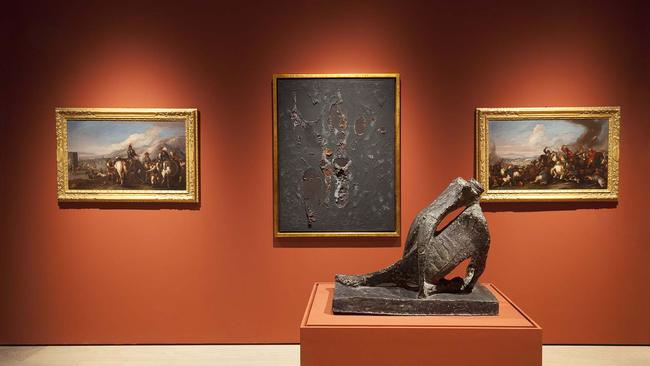
The gallery is the creation of Veronese entrepreneur and collector Luigi Carlon, a man of considerable means and taste, who has invested 60 years in amassing an art collection of significance. Having started collecting as a young man – his first piece was Greeting from a Distant Friend, a 1916 painting by Giorgio De Chirico – Carlon eventually found he needed an appropriate home for a collection that by 2019 extended to some 600 pieces. So he bought the palazzo and commissioned an extraordinary restoration that has returned the 17th-century palazzo to its rightful grandeur.
The best part is that he hasn’t keep it for himself, but has created a place for the public to enjoy not only his collection, but the palace itself, with its myriad gorgeous corners and rococo flourishes.
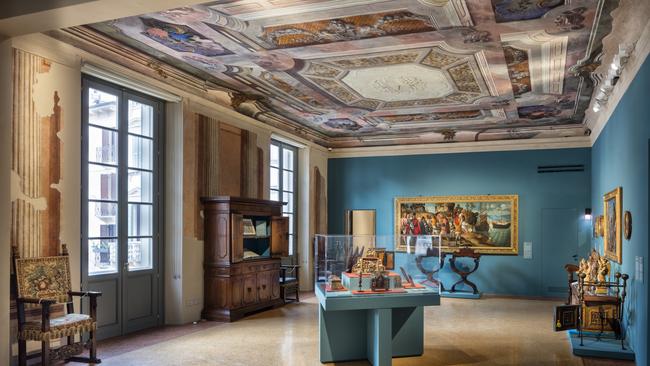
Visitors start their exploration on the first floor, where you buy tickets at the front desk, before meandering through 18 rooms, each with a different colour, theme and intention. The original structure of the home – built by wealthy Veronese merchants – remains; some rooms retain fireplaces and sideboards, while others have chairs and tables adorned with objets d’art.
The collection itself is eclectic and engrossing, featuring an eccentric cross-section of old masters, impressionists and futurists, plus pop art, historical artefacts and curios.
Apart from paintings, it includes sculptures, engravings, etchings, drawings, miniatures, ancient books, maiolicas, bronzes, ivories, furnishings and decorative objects dating from antiquity to the present. Carlon has personally selected each piece, with more than two millennia of artistic genius on display. And if there’s a particular learning into the art of the Veronese and their next-door neighbours, the Venetians, who’s complaining?
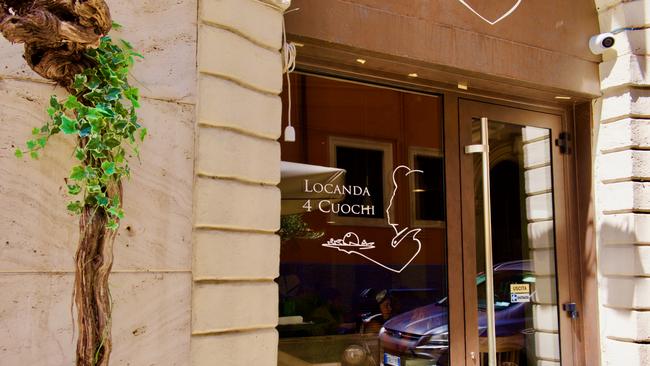
The depth and quality of the collection are astounding. The Italian representation alone includes Altichiero, Liberale da Verona, Niccolo Giolfino, Bonifacio de Pitati, Antonio and Giovanni Badile, Brusasorci and many more. Just as interesting are the international and contemporary pieces from, among others, Andy Warhol, Max Ernst, Marcel Duchamp and Pablo Picasso, whose Femme Assise (Seated Woman), 1951, is Maffei’s prized possession.
Favourites abound on every wall and in every corner. Some of mine include a disparate range of glories, from Giovanni Boldini’s Donna Franca Florio to a version of Katsushika Hokusai’s The Great Wave off Kanagawa, and; Leandro Erlich’s ethereal Cloud and an Eames lounge chair. You could get lost here for hours, or a day, looking at everything.
But there’s more to come, because after you’ve passed through the two floors of art, take a final flight of stairs to the rooftop, and take in a 360-degree view of the ancient city. Linger here, too, for Verona is stunning.
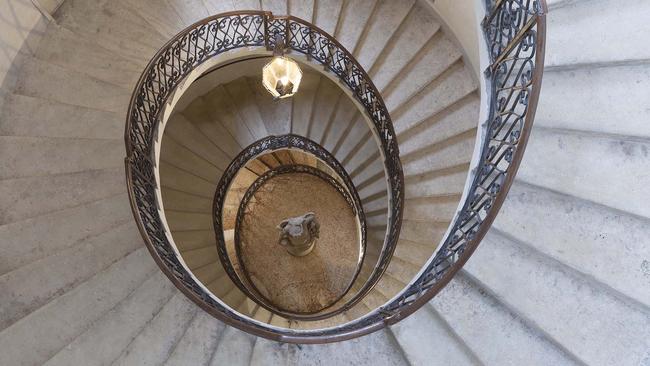
The Maffei opened in two phases, firstly on February 14, 2020, then on October 25, 2021. It was a difficult time to open a gallery in a country crippled by Covid, and the space hasn’t yet received the attention it deserves. Which may explain why, unlike the heaving public galleries of Florence, this one remains unimpeded by an overabundance of visitors. What a luxury to find such a treasure so unspoilt.
As Mariana walks us back down the glorious staircase, we return blinking to the piazza, still buzzing over what we just saw.
“Wonderful, isn’t it?” Mariana sighs, proud of her city and the gallery. “I told you it was a treat.” She was right.
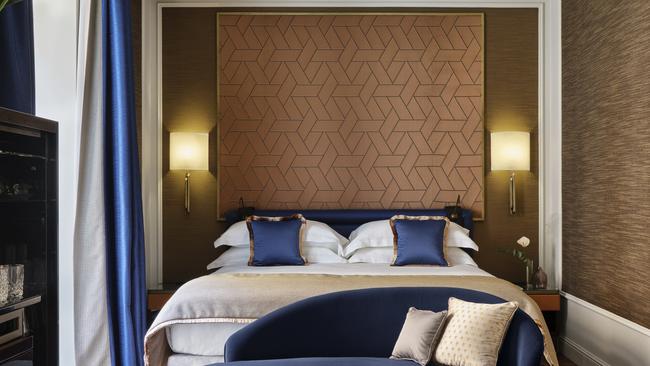
In the know
Palazzo Maffei Gallery is at 38 Piazza delle Erbe.
Open Thursday-Monday, 10am-6pm
General admission is €15 ($24), which includes access to the rooftop.
Stay
Vista Palazzo Hotel is a newly opened boutique hotel in the centre of Verona. Rates from €920 a night, twin-share and includes breakfast.
Eat
Dine outside the touristy areas and eat at Locanda 4 Couchi, Via Alberto Mario, 12, an excellent contemporary Italian restaurant with great pasta dishes.
Elizabeth Meryment was a guest of Vista Palazzo Hotel.
If you love travel, you can sign up to our free weekly Travel + Luxury newsletter here.


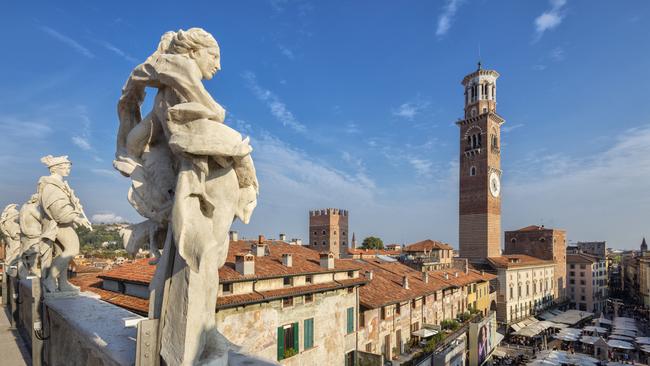



To join the conversation, please log in. Don't have an account? Register
Join the conversation, you are commenting as Logout